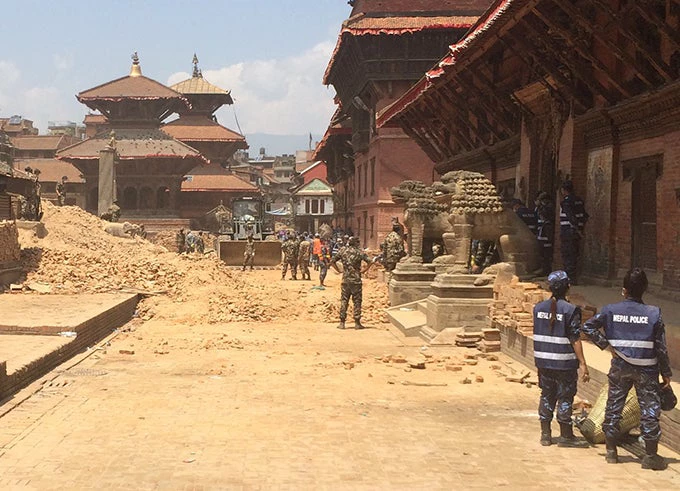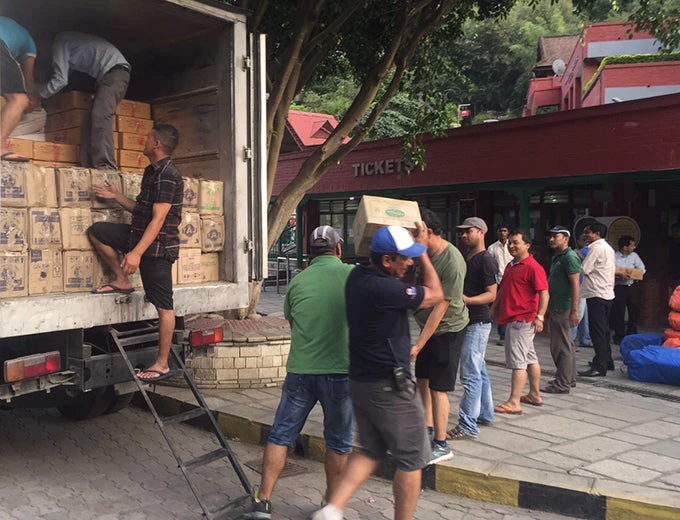
Credits: Rajib Upadhya. World Bank
It is Day Ten since the earthquake struck Nepal and the scale of the devastation is only just becoming evident. The official death toll has now crossed 7,000, of which 5,000 have been confirmed in remote rural areas. As many as 15,000 people are injured, many critically. Aftershocks continue to rattle central Nepal and most people are still too jittery to come to terms with what has happened.
As Kathmandu limps back to a new normal, the tragedy in rural Nepal is far from over. Homeless survivors are coping with unseasonal rains, obliterated livelihoods and very little by way of relief support. As if the weather and the terrain weren’t challenging enough, landslides have swept away mountain trails – their only connection to the outside world.
Time is running out. Chances are that subsistence farmers will miss the planting season which is only three weeks away. The monsoon is barely six weeks away and with it the likelihood of epidemics and more misery. The poorest have been hit the hardest.
As the administrative machinery flip flops the thin line between coordination and control, citizens groups have sprung into action. Thousands of young Nepali women and men – many who suffered tragedies of their own – are volunteering to reach out to the less fortunate. Nepal’s security forces have won high accolades for their professionalism. Social media is abuzz and friends of Nepal across the world are contributing what they can. These are the real heroes in this tragedy.
Among the survivors in Kathmandu there are mixed feelings of gratitude and dread. “What if” questions pervade most conversations. What if the earthquake had struck at night? What if it had hit on a school day? What if the only international airport was damaged? What if the hospitals were wiped out? What if vital supply chains were blocked?
Obviously, every single life lost is one too many. The emotional scars will take a long time to heal. Families will need to borrow or to dip into their life’s savings to repair or rebuild their homes. And the damage to Kathmandu Valley’s priceless heritage is colossal. Nonetheless, by and large Kathmandu seems to realize it got off fairly lightly if the April 25 earthquake was indeed the ‘big one’ everyone feared was coming.

Scientists had long warned that a big earthquake was overdue in Kathmandu. So did our grandparents. It turns out both were right. But we took our grandparents’ advice lightly as memories of a bygone era. And the science was a bit too imprecise to be convincing.
Not that all of the warnings were ignored. In recent years the government and development partners significantly ramped up disaster awareness and preparedness. Building codes were strengthened (albeit enforced in only three districts), earthquake drills were widely promoted, and open spaces were designated for safe havens in and around Kathmandu. But most doomsday scenarios centered only in Kathmandu Valley. Scant attention was called to the potential calamity in rural areas and emerging towns. This should be a big lesson when the next generation of preparedness plans are drawn up.
The international rescue teams will soon head back home. The global media will move on to the next big headline. But in Nepal the road to recovery will be long and arduous. For development workers the challenge will be to seize long-term opportunities in today’s adversity.


Join the Conversation